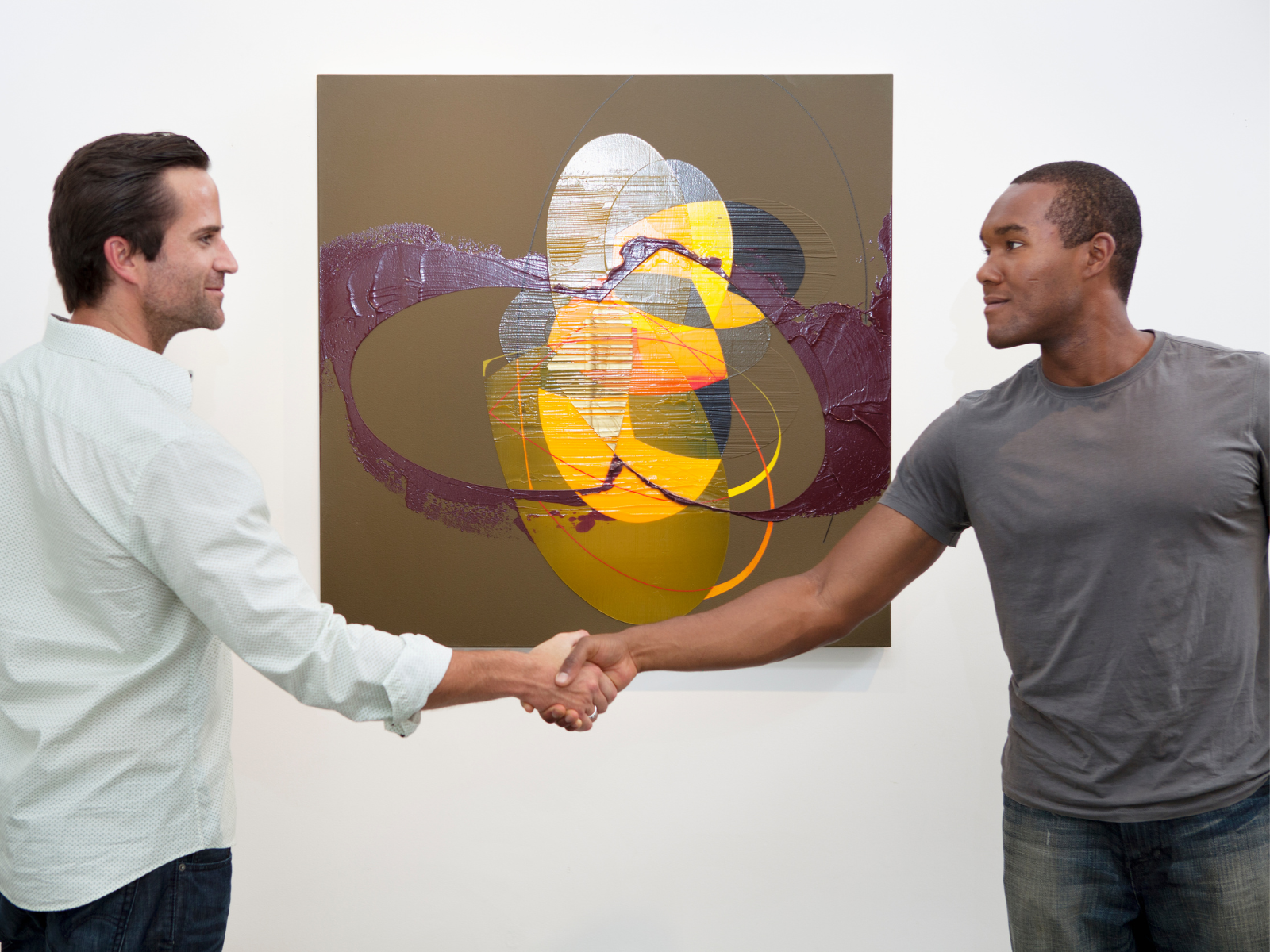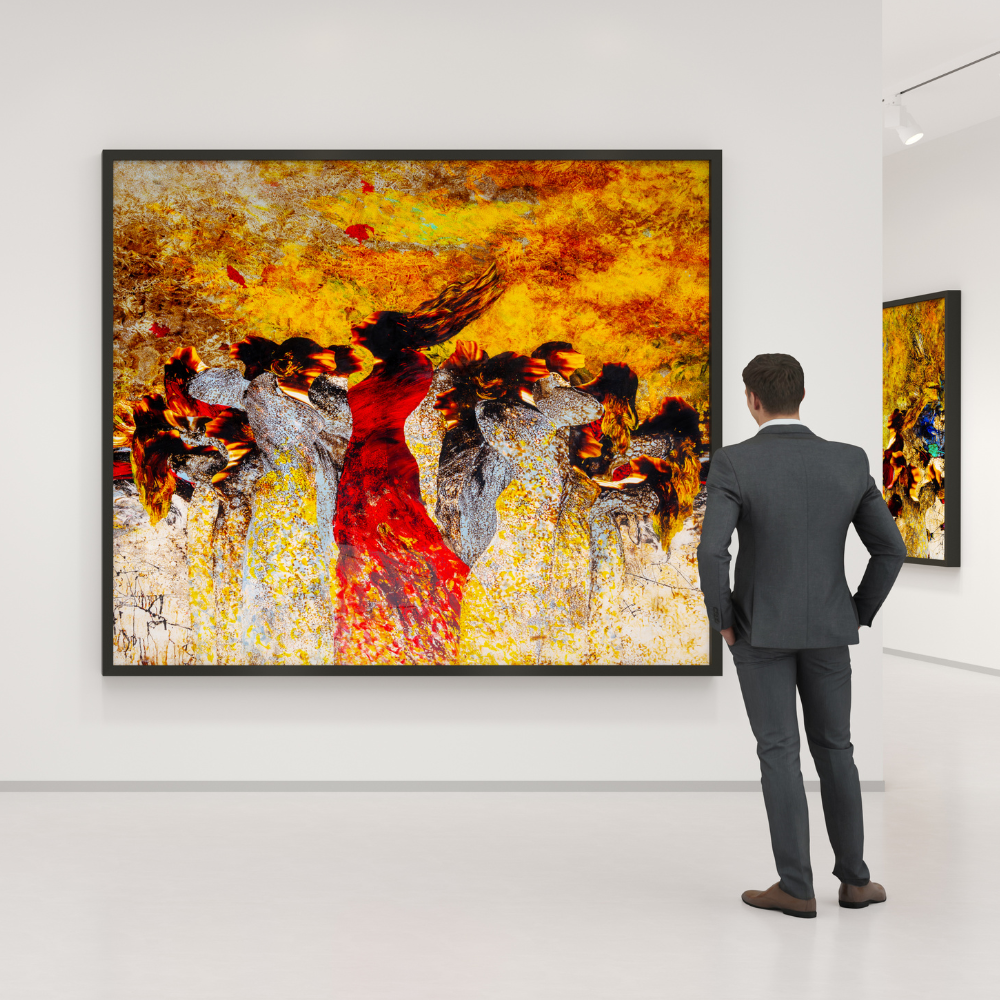Art isn't just about splashes of color on a canvas or chiseling stone into form; it's a profound expression of human emotion, thought, and innovation.
Art is a multifaceted human activity that has been a part of human experience since time immemorial.
The act of creating and interpreting art is deeply embedded in the fabric of society, and over the years, various art theories have emerged to explain and guide the understanding of fine art.
These theories provide a lens through which artists, art critics, and viewers can evaluate and appreciate artworks, serving as compasses that guide both creators and connoisseurs through the intricate landscape of art evaluation and appreciation.
In this enlightening journey, we will explore the four cornerstone theories for judging your art: the Imitation Theory, the Expressive Theory, the Formalism Theory, and the Institutional Theory.
Each theory offers a unique perspective, illuminating the diverse ways in which art can be understood and valued.
So, whether you're an artist seeking to refine your craft, an art critic sharpening your analysis, or simply an art lover eager to deepen your appreciation, this guide will unlock new dimensions of understanding in the vast, vibrant world of art.
Key Takeaways:
- Understanding the four main theories of art can provide a framework for both creating and evaluating artworks.
- These theories include the Imitation Theory, the Expressive Theory, the Formalism Theory, and the Institutional Theory.
- Each theory offers a unique perspective on what constitutes art and how its value and success can be assessed.



Imitation Theory: Art as a Reflection of Reality
The Imitation Theory, one of the oldest art theories, posits that the value of art lies in its ability to imitate reality.
This theory, which dates back to the ideas of Plato and Aristotle, suggests that the best artworks are those that most accurately represent the world around us.
According to this perspective, the elements of art such as line, shape, and color are used to create a semblance of real life.
Artists who excel in this theory are those who can depict nature and human figures with a high degree of realism.
For instance, the Renaissance period was marked by a focus on achieving perfect imitation of nature.
Artists like Leonardo da Vinci and Michelangelo are celebrated for their ability to create works that mirror the beauty and complexity of the natural world and human anatomy.
Their paintings and sculptures are considered successful because they closely resemble the objects and figures they represent.
Expressive Theory: Art as a Vehicle for Emotions
Moving away from the tangible aspects of the Imitation Theory, the Expressive Theory emphasizes the emotional impact of art.
This theory argues that the true purpose of art is to convey the artist's feelings and emotions.
The expressive qualities of an artwork are what give it its art status.
It's not just about replicating what is seen, but rather about communicating what is felt.
Abstract expressionists like Jackson Pollock and Mark Rothko exemplify this theory.
Their artworks may not imitate reality in any recognizable form, but they are considered art because they evoke strong emotional responses.
The splatters of paint and bold color fields in their works speak to the viewer on an emotional level, transcending the need for a literal representation of the real world.



Formalism Theory: Elements and Principles
Formalism is an art theory that focuses on the formal properties of an artwork – the composition, the use of elements and principles of design, and the manipulation of materials.
It argues that what makes an artwork significant is its form, structure, and the way it is made, rather than any narrative or imitative quality.
The aesthetic response of the viewer is elicited by the artwork's formal attributes.
A quintessential example of formalism can be found in the works of Piet Mondrian.
His grid-based paintings, with their precise lines and blocks of primary colors, are celebrated for their balance and purity of form.
They do not seek to represent the world or express specific emotions; instead, they focus on the harmony and rhythm of the visual elements themselves.
Institutional Theory: Art Defined by Context
The Institutional Theory of art is a more contemporary theory that emerged in the 20th century.
It suggests that an artwork's status as 'art' is not solely determined by its physical properties, expressive qualities, or imitative success.
Instead, art is whatever the art world – including artists, galleries, museums, and critics – decides is worthy of the label.
This theory was famously encapsulated by George Dickie's "institutional definition of art," published by Cornell University Press.
Marcel Duchamp's "Fountain," a urinal signed with the pseudonym "R. Mutt," is a seminal example of how the Institutional Theory operates.
By placing an everyday object in an art gallery context, Duchamp challenged preconceived notions of what could be considered art.
The piece was not judged on its aesthetic or expressive qualities but gained its art status through its presentation and the discourse it generated within the art institution.
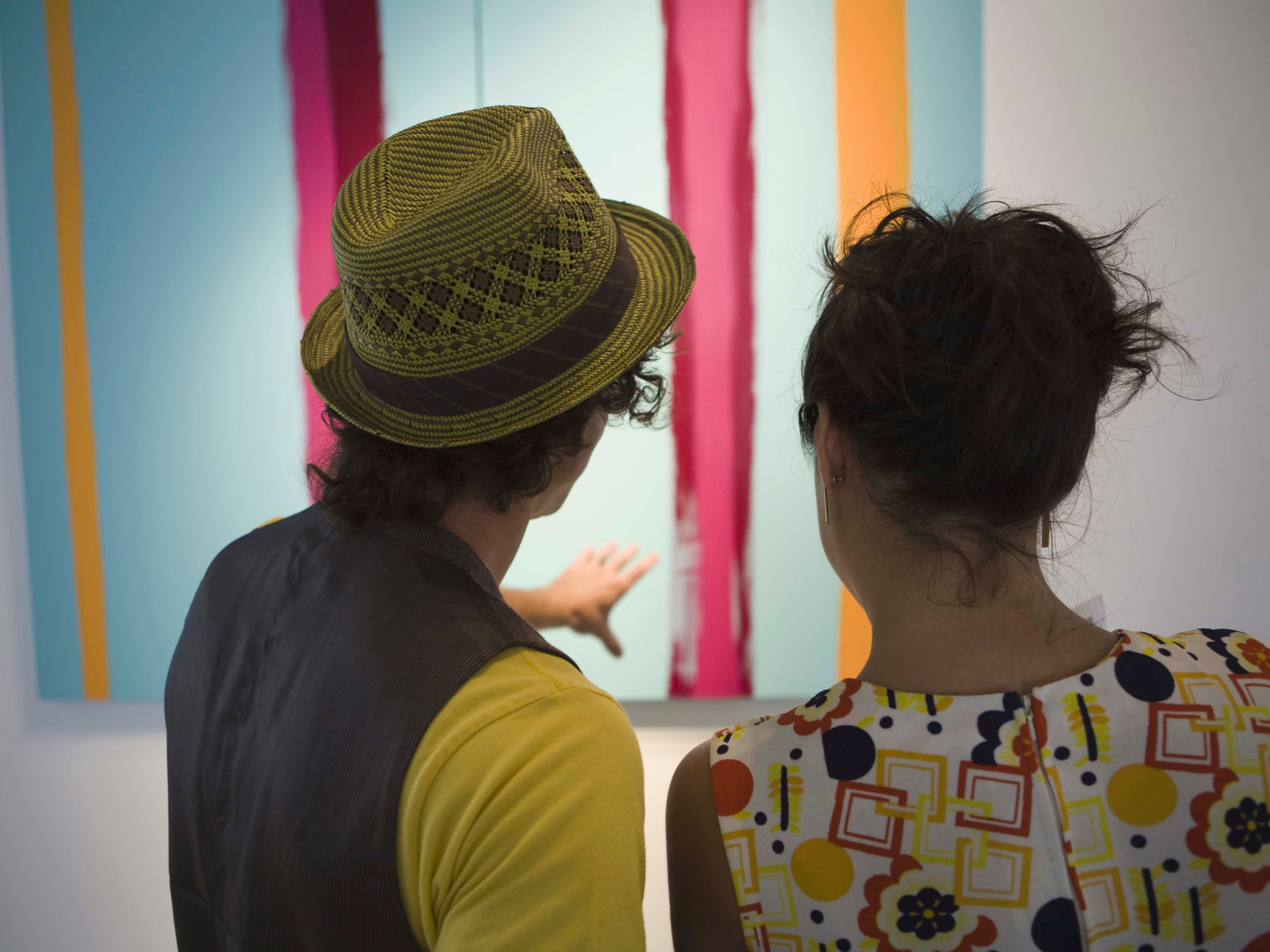

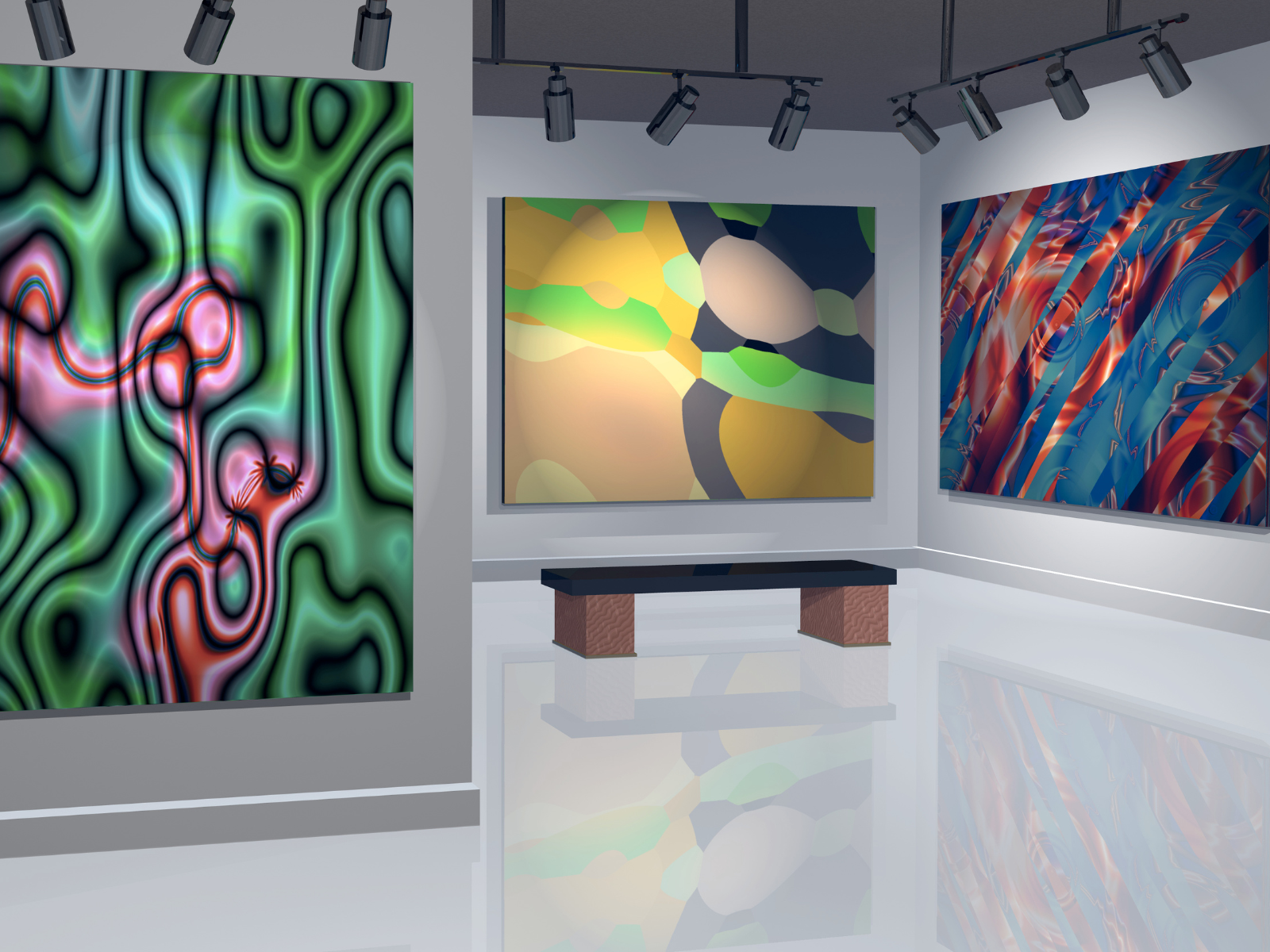
Unlocking the Artistic Code
The four theories for judging your art provide different criteria for what is considered art and how its value is determined.
It's clear that each offers a unique lens through which to view, create, and evaluate art.
From the meticulous realism championed by the Imitation Theory to the raw emotional depth sought by the Expressive Theory, the structured beauty highlighted by the Formalism Theory, and the contextual significance underscored by the Institutional Theory, these perspectives collectively enrich our understanding and engagement with art.
For artists, these theories open up new avenues for creative expression and refinement.
For viewers and critics, they provide a richer, more nuanced framework for appreciating the vast and varied world of art.
Embracing these theories means unlocking a more profound, diverse appreciation of the art that surrounds us, inviting us to see beyond the surface and delve into the deeper meanings and values that art conveys.

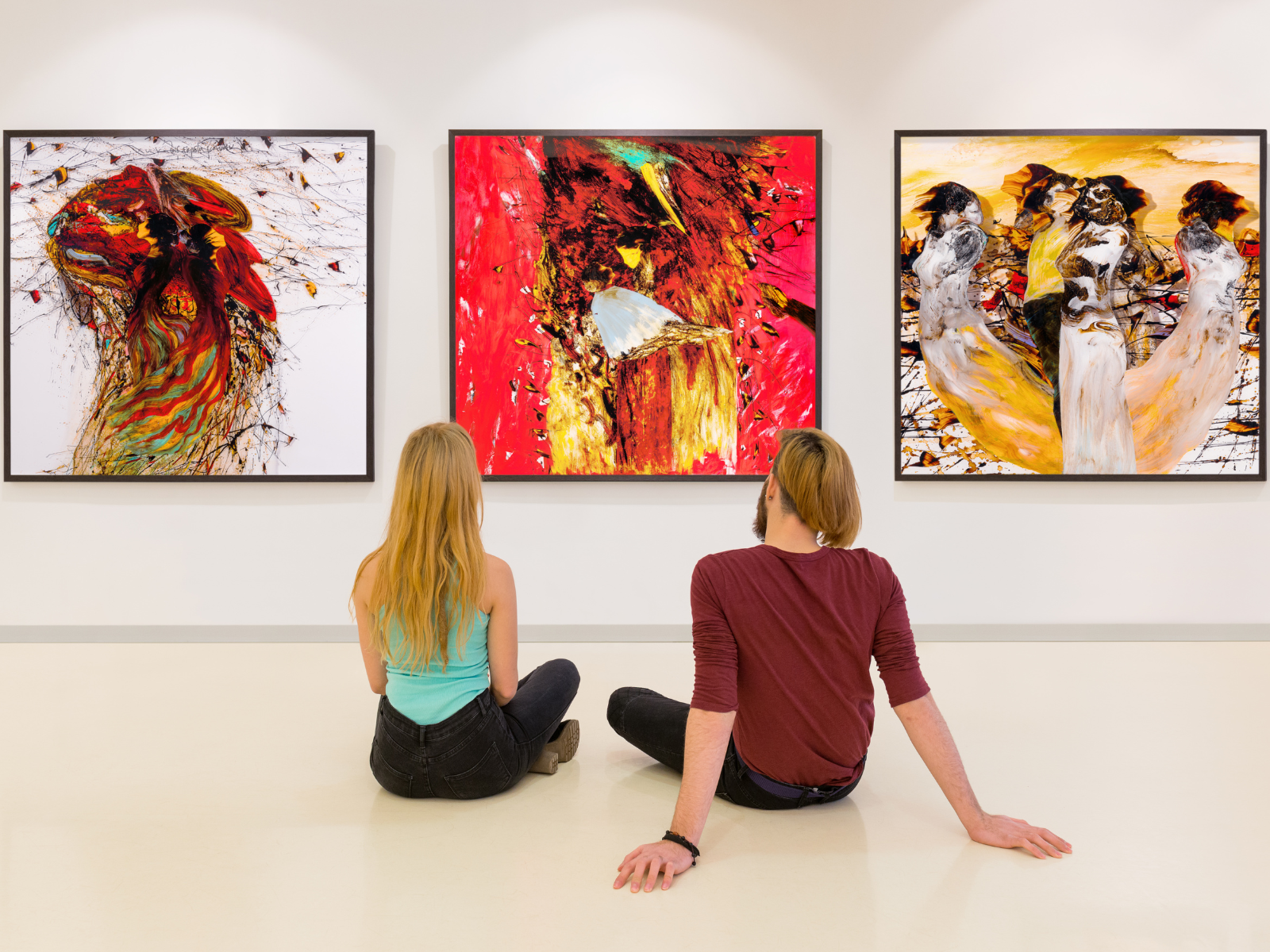

Art Theories FAQs
Diving into the world of art can be as mesmerizing as it is complex.
With each brushstroke, pixel, or sculpted curve, artists communicate with us through the universal language of creativity.
But how do we interpret these messages?
How do we judge the value, impact, or beauty of a piece?
Welcome to the FAQs, where we unravel the intricate tapestry of concepts that guide our understanding and appreciation of art.
Whether you're a seasoned art critic or a curious newcomer, these insights into different art theories will illuminate the diverse lenses through which we can view and evaluate art.
From the tangible precision of the Imitation Theory to the emotional depth of the Expressive Theory, and the structured analysis of Formalism, let's explore how these theories apply not just to traditional art, but to the digital masterpieces of our era.
And remember, while theories can guide us, the true beauty of art lies in its ability to transcend words and definitions, touching something unique in each of us.
Can an artwork be judged by more than one theory?
Yes, many artworks can be evaluated through multiple theories. For example, a painting might be appreciated for its realistic depiction of a subject (Imitation Theory), its emotional impact (Expressive Theory), and its composition (Formalism Theory).
How do these theories apply to digital art?
Digital art can be judged by the same theories as traditional art. The Imitation Theory can apply to digital works that imitate reality, the Expressive Theory to those that convey emotions, the Formalism Theory to the arrangement of digital elements, and the Institutional Theory to how the digital art is presented and recognized by the art world.
Do these theories dictate what is considered 'good' or 'bad' art?
These theories provide frameworks for judging art, but they do not necessarily dictate what is 'good' or 'bad' art. Art is subjective, and what one person considers a masterpiece, another may not appreciate. Theories offer guidelines but do not set absolute standards for quality.
What is the Pragmatic Theory?
The Pragmatic Theory of art emphasizes the experience that art induces in its audience. This perspective argues that the value of a work of art is not solely dependent on its form, style, or the emotions it conveys, but rather on the impact it has on the viewer's life. It suggests that art should be judged by the practical consequences it brings about, such as the inspiration it provides for creative imagination or the dialogue it initiates about political or social issues. This theory aligns with the philosophy that art is a dynamic process, engaging both the creator and the audience in a shared experience.
In this context, the Pragmatic Theory challenges the notion of 'bad art' by proposing that any piece that stimulates thought, discussion, or action holds value. It shifts the focus from the inherent qualities of the visual arts to the relationships and interactions they foster. Proponents of this theory argue that the necessary and sufficient conditions for something to be considered art are not just about aesthetics but also about the relevance and utility of such works in the real world. This approach encourages artists to reflect on the effects their own work has on society and how it contributes to the collective experience.
What is the Cognitive Theory?
The Cognitive Theory of art posits that artworks serve as instruments for knowledge and understanding. This perspective suggests that art is not merely an object of aesthetic appreciation but also a conduit for intellectual engagement. By interacting with art, viewers are invited to unravel the layers of meaning, symbolism, and cultural significance embedded within. This theory aligns with the notion that art imitates reality, not just in form but also in content, offering insights into the human condition and the world around us. It underscores the relevance of art as a medium through which we can explore and comprehend complex ideas and emotions.
In practical terms, the Cognitive Theory is evident in works that challenge the viewer's perceptions and encourage critical thinking. For instance, a painting that depicts a historical event doesn't just mirror the past but also invites the audience to consider the implications of that event on present-day society. By engaging with such art, individuals can develop a deeper understanding of the forces that shape their reality. This theory reinforces the idea that art is a relevant tool for education and enlightenment, transcending its aesthetic value to become a catalyst for cognitive development.
What is the Mimetic Theory?
The Mimetic Theory, rooted in the philosophies of Plato and Aristotle, posits that art is fundamentally an imitation of the natural world. This perspective suggests that artists are inspired by the beauty and complexity found in their surroundings and seek to replicate or represent these qualities through their creative endeavors. The keyword "what are the theories for judging your art" is central to this theory, as it implies a standard of comparison between the artwork and the reality it seeks to mimic. The fidelity of this representation, the skill in capturing the essence of the subject, and the ability to evoke a sense of recognition in the viewer are all criteria for judgment within the Mimetic framework.
In the context of aesthetic theory, the Mimetic Theory offers a lens through which to evaluate the success of an artwork based on its representational accuracy. However, it also opens up a debate about the value of literal representation versus abstraction. While some may argue that the highest form of art closely resembles what it imitates, others believe that the transformation of reality into a unique artistic vision holds greater significance. This dichotomy challenges the viewer to consider not just the likeness of an artwork to its source, but also the interpretive and transformative power of the artist's hand.
What is the Contextualist Theory?
The Contextualist Theory examines art through the lens of its cultural, social, and historical context. This theory underscores the belief that art cannot be fully understood or appreciated without considering the environment from which it emerged. Keywords such as "aesthetic theory" are integral to this approach, as they highlight the importance of the cultural standards and aesthetic values that shape and are reflected in the artwork. The Contextualist Theory encourages viewers to delve into the artist's background, the prevailing ideologies of the time, and the societal influences that may have impacted the creation of the art piece.
In practical terms, the Contextualist Theory enriches the experience of judging art by adding layers of meaning that go beyond the visual or sensory appeal. For instance, a painting might be evaluated not only for its compositional elements but also for its commentary on social issues or its role in a historical movement. This theory invites a multidimensional critique, where the significance of an artwork is measured by its relevance and resonance with the cultural narrative of its era. By doing so, it positions art as a dynamic participant in the ongoing dialogue between individuals and the societies they inhabit.
What is the Affective Theory?
The Affective Theory of art emphasizes the emotional impact that art can have on its audience. According to this theory, the primary purpose of art is to evoke a response, whether it be joy, sadness, anger, or any other emotion. This theory aligns with the expressive theory but takes it a step further by focusing on the viewer's experience rather than the artist's intention. It suggests that the value of art lies in its ability to connect with individuals on an emotional level, making it a powerful tool for communication that transcends language and cultural barriers.
Art that resonates with the Affective Theory often has a visceral quality that strikes a chord with the audience. For example, a sculpture that captures the agony of loss can provoke a profound sense of empathy in the viewer, creating a shared emotional experience. This theory highlights the importance of the viewer's subjective experience and the role of art in shaping and reflecting our emotional landscape. It suggests that understanding what are the theories for judging your art includes recognizing the affective dimension of our interaction with art, acknowledging its capacity to move us in profound and unexpected ways.
What is the Phenomenological Theory?
The Phenomenological Theory of art delves into the realm of aesthetics by focusing on the conscious experience of perceiving a work of art. It posits that art should be judged based on how it is directly experienced and interpreted by individuals, emphasizing the importance of personal engagement and interpretation. This theory suggests that the essence of a work of art lies in the interaction between the observer's senses, their past experiences, and the piece itself. It is through this interaction that the observer can uncover the meaning, emotion, and message that the artist has embedded within the art.
By adopting a phenomenological approach, one can argue that different kinds of art are created to evoke a spectrum of sensory and emotional responses. This theory invites viewers to immerse themselves in the artwork, to describe and analyze their perceptions, and to consider how their unique viewpoint contributes to the understanding of the piece. It acknowledges that each individual's encounter with art is subjective, yet it is precisely this subjectivity that defines the significance and value of the work of art. The phenomenological lens allows for a deeper appreciation of the concepts and intentions behind such works, making the experience of art both personal and profound.

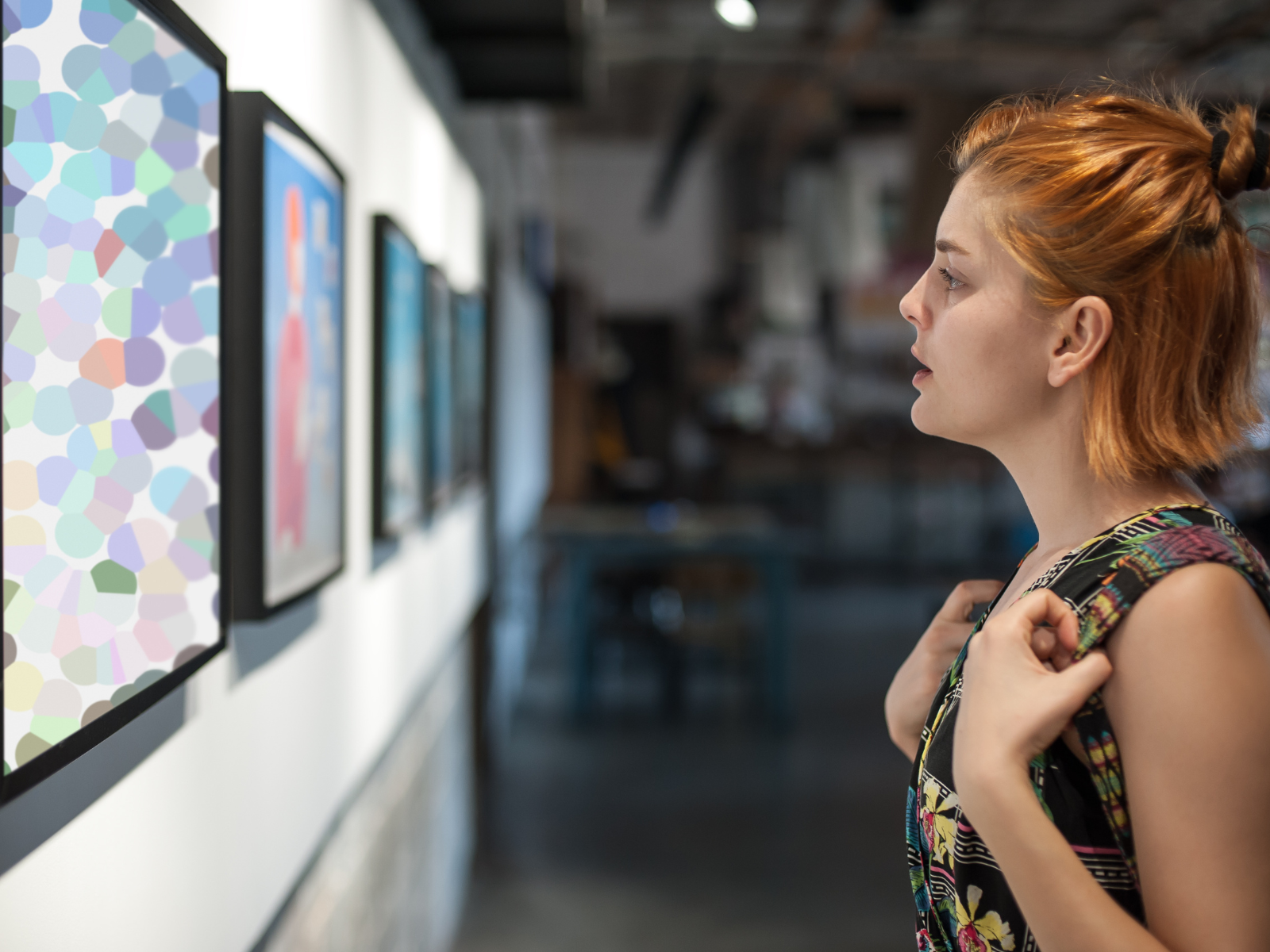

Interested in learning more about art theories and philosophies? Check out Overthink Podcast's video!
Want even more content about creativity and art?
Be sure to check out all of our creative chronicles!
Eager to explore art, creativity, and critiquing?
Check out some of our other articles:
-Giving and receiving feedback
-What questions can you ask while evaluating art?
-How do you evaluate a piece of art?
-What are the four major areas of art criticism?

